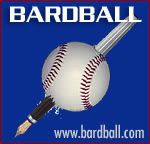Spring Training is a Crock
I’ve been to four spring trainings, two each in Florida and Arizona, traveling to different parks while on assignment for various publishers.
There are some great things about spring training. You get amazing access to players, and not only if you’re in the press. Players are simply more approachable during the spring, for autographs, conversations, or what have you, whether they be on the practice fields, hanging around the dugout, or even out at night in Scottsdale, Clearwater, Tucson, Kissimmee, or Phoenix.
Sitting in the warm sun and watching a ballgame is in itself beautiful, and being surrounded by mountains, cacti, and sand in Arizona, or lakes and shorebirds in Florida, is a nurturing experience.
But I honestly don’t think I’d go to games if I weren’t working. Not with what teams charge today for spring training.
The Boston Red Sox get $44 for field box tickets at their clunky old stadium in Winter Haven, Florida. Yes, $44 for a spring training game. For that price, you ought to get Kevin Youkilis serving your beer. The least expensive grandstand tickets there cost twenty-one smackers.
You want a dugout box to a spring game at Hammond Stadium in Lee County, Florida, to see the Twins? That’s “just” $35. Yes, $35. Standing room? Oh, that’s a relative bargain at ten bucks.
Legends Field in Tampa, home of the Yankees, has no general admission seats. The cheapest ticket to a game is $17. That’s also the cheapest ticket to Osceola County Stadium in Kissimmee, home of the Astros. I've been there, and it ain't worth $17.
It’ll cost you $14.50 to sit on the lawn at the Braves’ spring training home at Disney, and a rather stunning $12 for weekend SRO seats at the Giants’ Scottsdale Stadium, where you can be charged as much as $26 for a box seat.
Of course, not all teams charge that much. Phoenix Municipal, one of the oldest spring training parks in Arizona, tops out at $24 for boxes and $6 for standing room. That same six bucks gets you a seat on the berm at Mesa’s Ho Ho Kam Park to watch the Cubs. Field boxes are $22.
But that’s still a lot of money for exhibition games, especially ones that may not even be played to a decision.
First of all, rarely will tie games proceed past the ninth inning, and then generally only through the tenth. Well, that’s a ripoff. Whether it’s a spring game or not, fans deserve to see a real game for their money. Shutting down a game after ten innings is just cheating the public, which is paying good money to see players wearing major league uniforms. If they don't finish the game, how about giving some of that money back?
Second, how many star players end up going a full game in the spring, or even half of one? Fans paying full price to see the Cubs travel to play the Royals in Surprise, Arizona may end up watching Double-A players wearing Cubs uniforms for the last several innings—if not more. Often, star players don’t even have to make road trips, instead getting dispensation to do their morning workouts, then head off for an afternoon of golf. Spring training, indeed.
The length of Cactus and Grapefruit League schedules also can lead to more injuries—not from players being out of shape, but simply because baseball can be dangerous. In the last week, Rafael Furcal, C.C. Sabathia, Chien-Ming Wang, Jason Repko, Nook Logan, Chone Figgins, and others have been shelved by everyday baseball injuries.
But there’s no way, now that spring training is a moneymaker, will we ever go back to a shorter schedule. The chances are greater, in fact, that spring training will be stretched out even further.
In the old days, probably up until about 15 years ago, spring training for nearly every team was an expense, rather than a profit center.
But now, between increased television and radio rights deals, high ticket prices, souvenir sales, and the sweetheart park and maintenance deals laid out for the teams by their host cities—which benefit from the tourist trade—it now behooves teams to have longer, rather than shorter, spring trainings.
Maybe I'm one of those pain in the ass purists. But I say it’s a crock.





